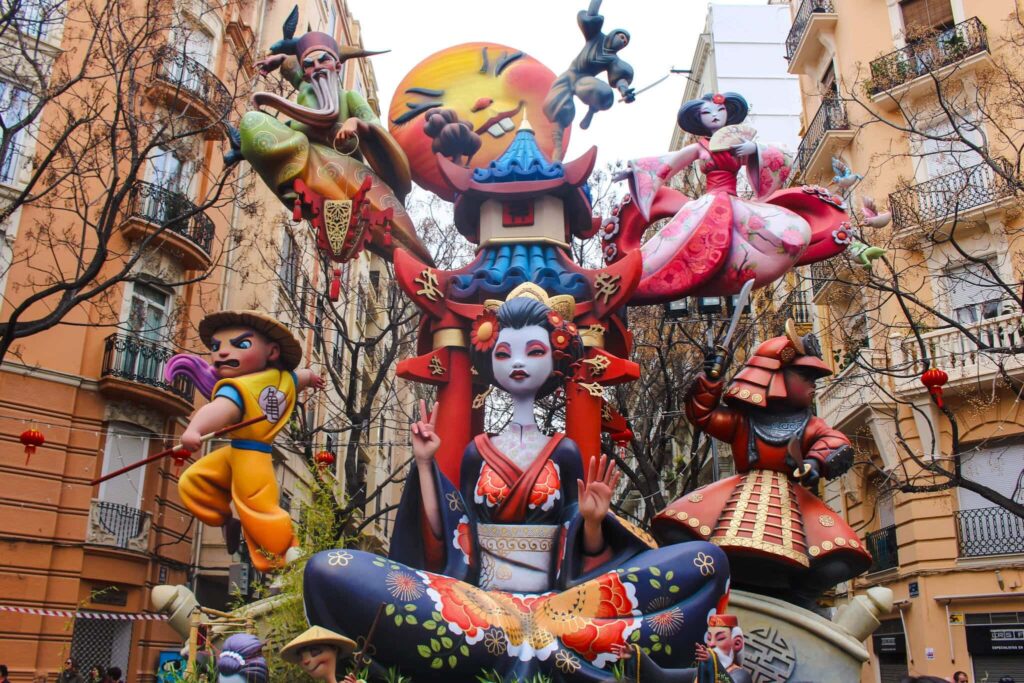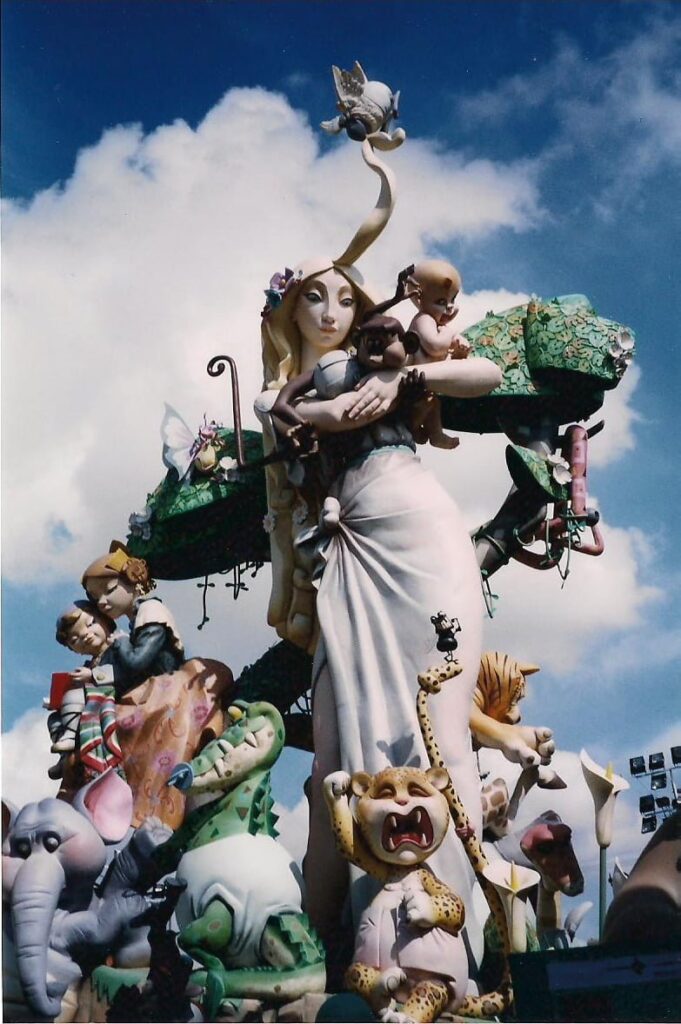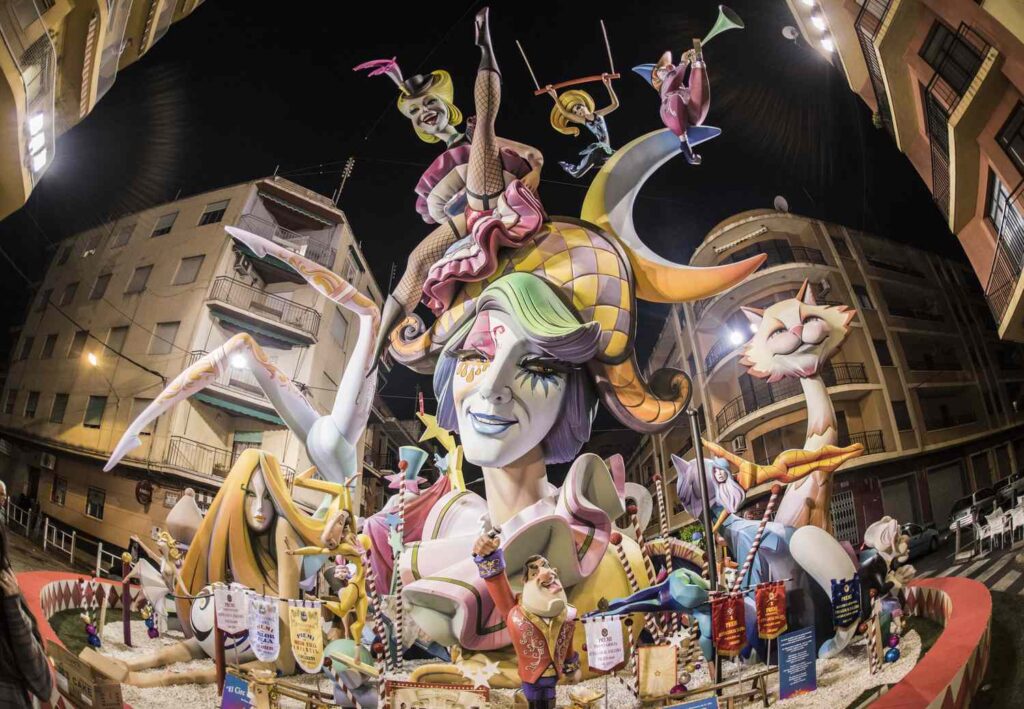Valencia Fallas: Spanish festival
Are you one of those folks whose heart races at the scent of gunpowder or can’t help but grin when they see flames flickering in the distance? Well, my fellow fire enthusiast, let me introduce you to an explosive celebration that will ignite your passion for pyrotechnics – the Las Fallas festival in Valencia! Prepare for a wild, smoky, spirited fiesta where fire takes centre stage and the streets come alive with dancing flames. Join me as I unravel the fascinating world of Las Fallas, and trust me, when you visit Valencia, you’ll feel like you’ve found your fiery tribe among the fallers and fallers.

WHEN DID Valencia Fallas START?
The origins of this fiery extravaganza may be shrouded in mystery, but boy, do we have some compelling theories! One famous tale suggests that Las Fallas emerged from a centuries-old Valencian tradition, where the city’s crafty carpenters would set fire to their unwanted materials on the eve of St. Joseph’s Day, March 19. Now, why St. Joseph, you ask? Well, he’s the patron saint of carpenters, and it seems those craftsmen had a knack for timing their pyrotechnics to coincide with the spring equinox when the days grew longer and the need for their oil lamps diminished.
Then, another theory takes us even further back in time to an ancient tradition of lighting fires to celebrate solstices and equinoxes. Las Fallas emerges from an age-old tradition of welcoming spring with a bang in this version. Lastly, picture this – a quirky European tradition where they’d hang dolls or figures representing unwanted personas from balconies, only to toss them into a blazing fire. This theory explains the festival’s satirical edge that continues to this day.

While folks may quarrel about the festival’s origins, we can agree that Las Fallas is ancient! The earliest written record mentioning Las Fallas hails from the latter half of the 18th century when the Valencian authorities thought it wise to lay down some ground rules about where these fiery spectacles could be set ablaze.
WHAT DOES LAS FALLAS MEAN? IS IT FALLAS OR FALLES?
You might hear people toss around the terms “Fallas” (in Spanish) or “Falles” (in Valencian) like confetti at a parade. Confusing, right? Fear not, my fellow firebug! Both words are plurals of the Valencian word “falla” because Spanish and Valencian like to do plurals their way. But what on earth does “falla” mean, you ask?
The word “fall” has taken quite a journey over the centuries. It started as a “torch,” then shifted to signify the fiestas where special torches were lit (that goes back to 13th-century Valencian texts). Next, it evolved into a fire lit amid a gathering or fiesta (circa 16th century). Come the 18th century, “fall” was a fire set to burn “ninots” (those cheeky puppets or dolls) used for satire. And wouldn’t you know it? Eventually, even the figures earned the moniker “falls” or “fallas.”
Today, “fallas” can mean many things – it might refer to the festival itself, the fiery spectacles within it, the art installations that go up in flames, or the communities of neighbours who roll up their sleeves to create these flaming masterpieces.

WHAT IS LAS FALLAS?
Picture this: Valencia, a tranquil city with around 800,000 residents, swells to more than double its size when over a million fire-loving fanatics flock to Las Fallas like moths to a flame. The festivities span five glorious days, from March 15 to 19, but the excitement starts weeks in advance. From March 1 to 19, a loud firecracker spectacle known as “mascletà” shakes the ground daily at 2 p.m. in Plaza del Ayuntamiento. It’s all about the noise, folks – a pure auditory delight. (Don’t worry; there are many jaw-dropping visual fireworks displays every night from March 15 to 19.)
Things kick into high gear on March 15 with “La Plantà,” when over 700 colossal “ninots” (those puppets or dolls) pop up all over the city. Streets are closed to traffic, paving the way for a riot of people and activities filling the streets day and night throughout the fiesta.

For many, the heart of Las Fallas beats with the creation and destruction of “ninots,” these towering statues crafted from papier-mâché, cardboard, wood, or plaster. These aren’t your ordinary statues; they’re lifelike, often portraying cheeky, satirical scenes and current events. Some of these “ninots” are so huge that cranes must get involved to move them into their final positions in Valencia’s parks, plazas, and intersections. A bunch of “ninots” joins forces to tell a multifaceted story for each “fall.”
Over the next few days, folks roam the city, marvelling at the artistry and humour of these creative marvels, all while indulging in traditional pastries available on practically every street corner. For that authentic local experience, don’t forget to savour the Valencian classic – “bunions de carabassa” (pumpkin cakes) with a steaming cup of chocolate.
These “ninots” stand tall until the grand finale on March 19, aptly named “La Cremà” (the burning). But wait, there’s a twist! Each year, one “ninot” earns a reprieve through a popular vote – it’s dubbed the “ninot indultat” (the pardoned “ninot”) and gets a prime spot in the local Fallas Museum, alongside other fan favourites from years gone by.
Amid the daily firecracker symphonies and the climactic “not” inferno, Las Fallas boasts an array of other events. Festival-goers can revel in bullfights, music, parades, paella cook-offs, flower offerings, and even beauty pageants scattered throughout the city.
Can’t swing a visit to Valencia in March? No worries! Check out other Spanish festivals to rev up your travel plans. The world of fiestas awaits!


